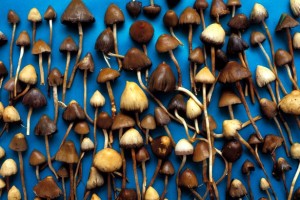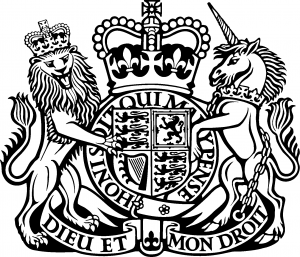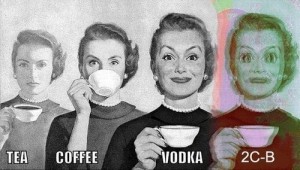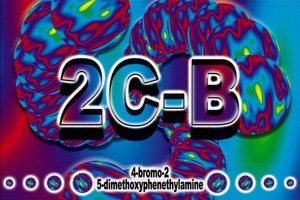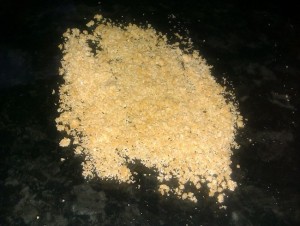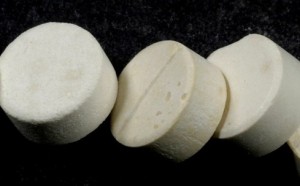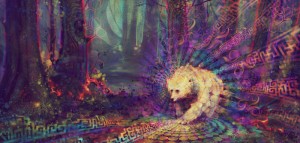Drugs – Miscellaneous
Drugs: Misc
Magic mushrooms, 2CB/2-CT-7, DMT, 4MTA
Magic Mushrooms
(‘shrooms, mushies, liberty caps)
Magic mushrooms are a powerful, naturally occurring hallucinogenic.
There are about a dozen varieties of hallucinogenic mushrooms found growing in the wild in the UK, the most popular being the ‘Liberty Cap’ (Psilocybe Semilanceata). The harvesting season is between September and November. After picking, mushrooms are usually eaten raw, cooked, made into a drink, or dried for later consumption. They are usually sold loose in bags or crushed into tablets.
The effects of mushrooms are very similar to acid, although some report a more ‘natural’ high sometimes with a feeling of being detached. Small doses can bring on excitement and euphoria, while bigger doses (15 small UK grown mushrooms or more) can bring on shape and colour distortions and vivid hallucinations.
Side effects:
Much the same as acid. Some users complain of nausea, dizziness, vomiting, diarrhoea and stomach pains. Like all hallucinogens, how good or bad your trip will be can be affected by who you are with, where you are and how you’re feeling at the time. Some people also report flashbacks. It is important to be in a safe environment as some people can panic and get confused.
Like all drugs, the exact nature and strength of the effects doesn’t just depend on the amount of mushrooms taken: the body weight, tolerance levels, and general physical health and mental state of the user all have parts to play.
Health risks:
Little research has been done into the long-term effects of mushrooms. There are no serious problems such as dependence and withdrawal associated with the drug, and as the body quickly develops tolerance, continuous use is unlikely. The hallucinatory effects of the drug can make people at risk of accidents, while the biggest risk is of people mistakenly picking and consuming poisonous mushrooms – make sure you know what you’re taking. If in any doubt, don’t take them.
The Law:
The Drugs Act 2005 classified raw magic mushrooms – and dried or prepared ‘shrooms – as Class A drugs.
The new legislation slammed down hard on the sale and distribution of magic mushrooms, with anything up to life imprisonment and an unlimited fine for supplying someone else with magic mushrooms.
Possession of magic mushrooms is up to seven years in jail and an unlimited fine and it is illegal to import, export, produce, supply, possess or possess with intent to supply magic mushrooms, in any form. Supplying growing kits is also outlawed.
Previously only dried and prepared magic mushrooms were illegal because they contained high levels or the chemical psilocybin, but raw mushrooms that contain psilocybin have also been deemed illegal.
Magic mushrooms have been used ritually by the native people of Mesoamerica for hundreds, if not thousands, of years. In the 1950s, R. Gordon Wasson and his wife traveled to Oaxaca, Mexico and participated in a mushroom ritual. That experience led to a 1957 Life magazine article titled “Seeking the Magic Mushroom.” The following year, the Swiss scientist Albert Hofman, who had been the first to synthesize LSD in 1938, identified psilocybin and psilocin as the active compounds in magic mushrooms. In 1960, Timothy Leary and Richard Alpert founded the Harvard Psilocybin Project to study the effects of psilocybin on humans. Harvard University famously fired Leary and Alpert in 1963.
Serious study of magic mushrooms essentially ended when the compounds psilocybin and psylocin were listed as Schedule I drugs in 1971. However, people around the world have used magic mushrooms with the goals of expanding consciousness and achieving spiritual growth ever since it was popularized by the hippies in the the 1960s.
Despite its illegal status, researchers have once again started studying the effects of psilocybin on humans. The results so far have been intriguing. ReasonTV caught up with Roland Griffiths of Johns Hopkins University and Robin Carhart-Harris of Imperial College London at the Psychedelic Science 2013 conference in Oakland, CA to learn what’s happening at the cutting edge of psilocybin research.
Approximately 5 minutes. Produced by Paul Feine and Alex Manning.
Go to http://reason.com/reason.tv for downloadable versions and subscribe to Reason TV’s YouTube Channel to receive automatic updates when new material goes live.
2CB (and 2-CT-7)
2CB is normally sold as a 5mg pill for £2-5 each with many users taking several at a time. Its effects are likened to ecstasy with heightened visual imagery, increased bodily awareness and sensitivity and an increased sex drive. Effects normally last for around 2-8 hours.
Some people report that taking 2CBs with Ecstasy (often called a ‘party pack’) can attenuate the hit.
Side effects:
The effect is cumulative (i.e. the more you take the stronger the effects) and taking over 3-5 tablets can cause very powerful hallucinations which some find very disturbing. As with all drugs, how you feel and where you are can all play a part in how you are affected by the drug.
2C-B is a psychedelic phenethylamine that has been used since the 1970s, after it was synthesized by Alexander Shulgin. It has psychedelic, entactogenic, and aphrodisiac qualities.
2C-B = Nexus; Erox; Bees; Venus; Bromo Mescaline
The Drug Classroom (TDC) is dedicated to providing the type of drug education everyone should have. Drugs are never going to leave our society and there has never been a society free from drugs.
Therefore, it only makes sense to provide real education free from propaganda.
TDC doesn’t advocate drug use. Rather, we operate with the intention of reducing the harm some substances can bring.
2-CT-7 is a much less well known drug that has been described as giving a slightly stronger trip than 2CB (somewhere between ecstasy and LSD). Coming in the form of pills and costing around £3 in Amsterdam (where it is currently still legal), its strength can be deceptive and many have suffered strong hallucinations – sometimes paranoid.
*We advise caution – especially if you are not sure about the quality.
DMT (Businessman’s Lunch)
DMT is a very powerful hallucinogen that kicks in very quickly and can produce a very strong trip that usually lasts between 10-30 minutes.
Heart rate and blood pressure increase dramatically and there is a feeling of exhilaration and confusion. Some people are overcome by the strength of the drug, and it is important to feel safe and relaxed in your environment, preferably with a friend to look out for you.
Side effects:
Some people have become very scared and paranoid after taking DMT. Its effects can be very disorientating resulting in panic and confusion.
Health risks:
If you’ve high blood pressure or heart problems taking DMT could be risky. Try not to mix it up with drugs like poppers, coke or E as this could send your poor old heart into a frenzy.
Dimethyltryptamine, commonly known as DMT, has received a lot of attention in recent decades on its own and as a result of discussions about Ayahuasca, which has become a trendy (albeit illegal) drug.
There are some popular myths about DMT that are worth addressing while also highlighting the things that truly make DMT interesting.
4MTA (MTA-1, flatliners)
Despite hysterical newspaper reports suggesting that 4MTA is ’33 times more potent than ecstasy’, 4MTA is in fact a recent legally-developed slimming aid and anti-depressant.
Legally on sale in Amsterdam until 1998 (it was taken out of the stores when owners realised that it had only ever been tested on rats), 4MTA usually comes in tablet form, with effects lasting anything up to 8 hours.
Users have described 4MTA as giving a steady increase in energy and a ‘Prozac-like mental calm’.
Health risks:
The biggest risk comes from users mixing 4MTA with other drugs such as cocaine and ecstasy, and from overdosing on the drug – possibly from taking more and more as the media-hyped huge e-like hit fails to materialise.
There have been four recorded UK deaths linked with 4MTA but it should also be noted that “on its own, a flatliner will no more readily kill you than a tab of Prozac or Viagra”, The Observer (24.11.99)
Reports suggest that one 125 mg dose of MTA delivers a mild stimulant effect without the charged or euphoric buzz of speed or MDMA, with no hallucinations or visual distortions and overall. The effects can last up to 12 hours.
Legal:
4-MTA has been classified as a Class A controlled drug in the UK since February 2001.
Special note:
Urban75: This site is all about harm reduction. We realise that some people will take drugs no matter what advice they are given. This guide is to be for information purposes only. It is not medical advice. If you are being coerced into taking drugs, or are in any doubt about taking a substance, our advice is to always refuse.
Source:Urban75

